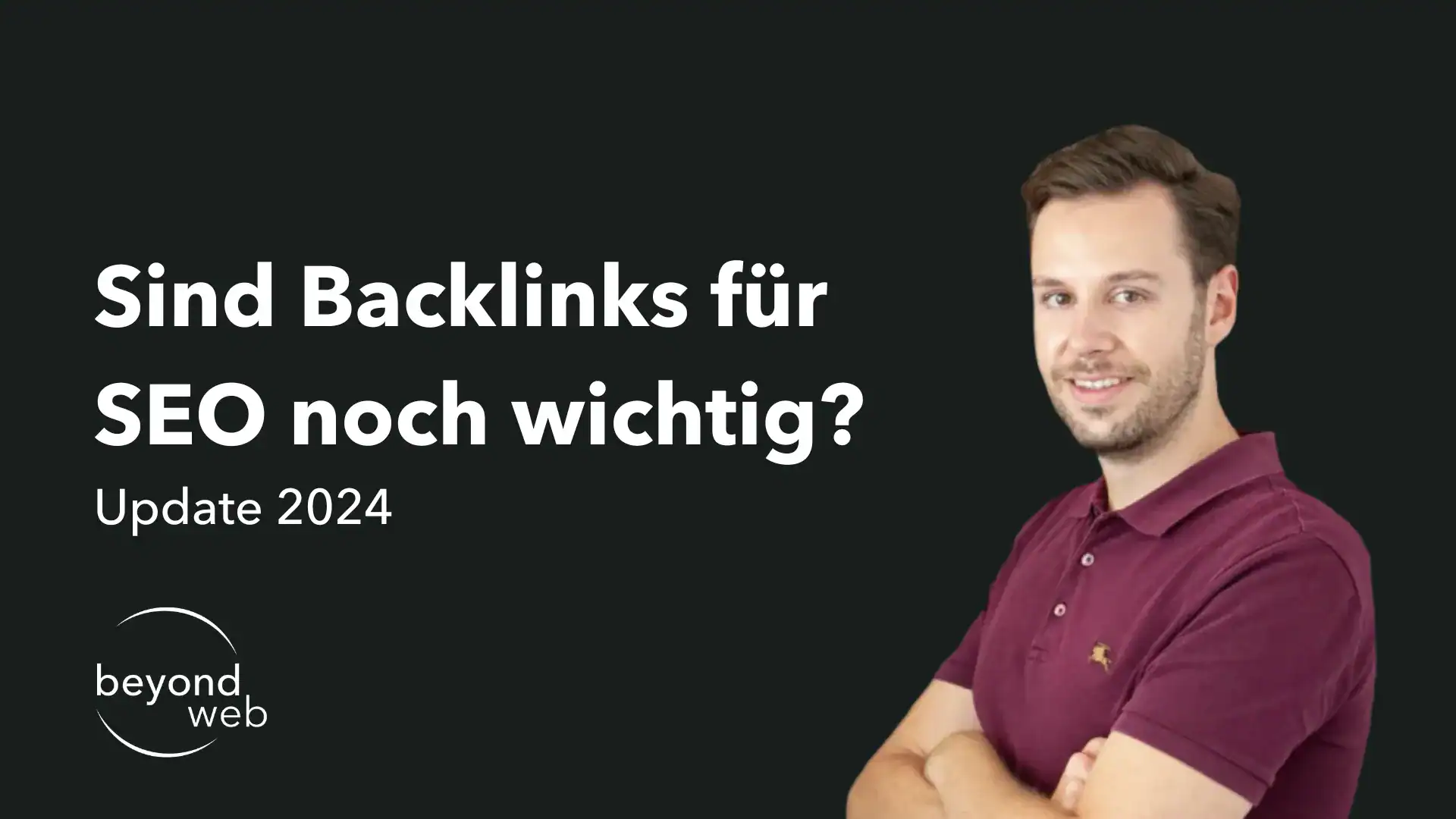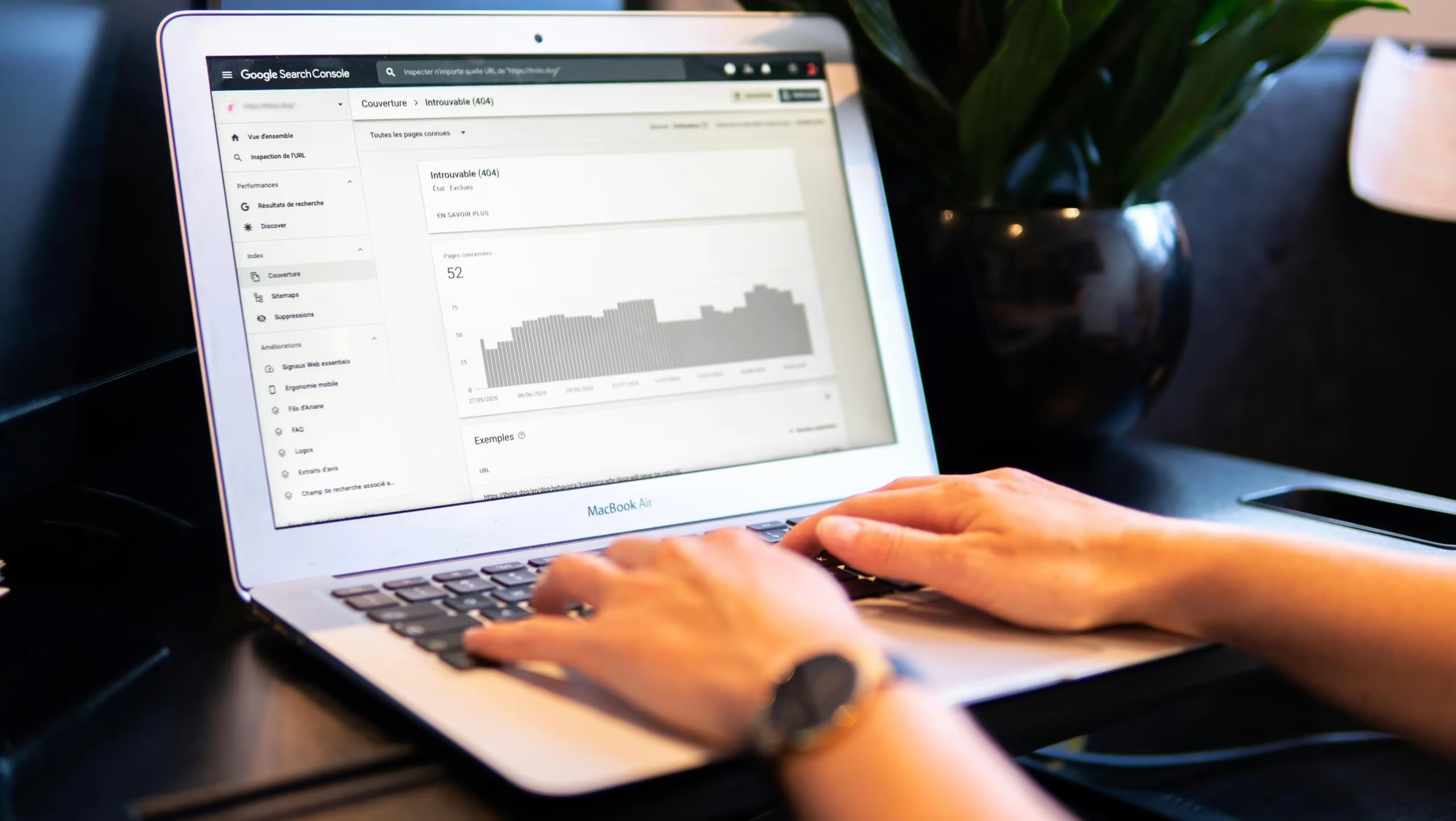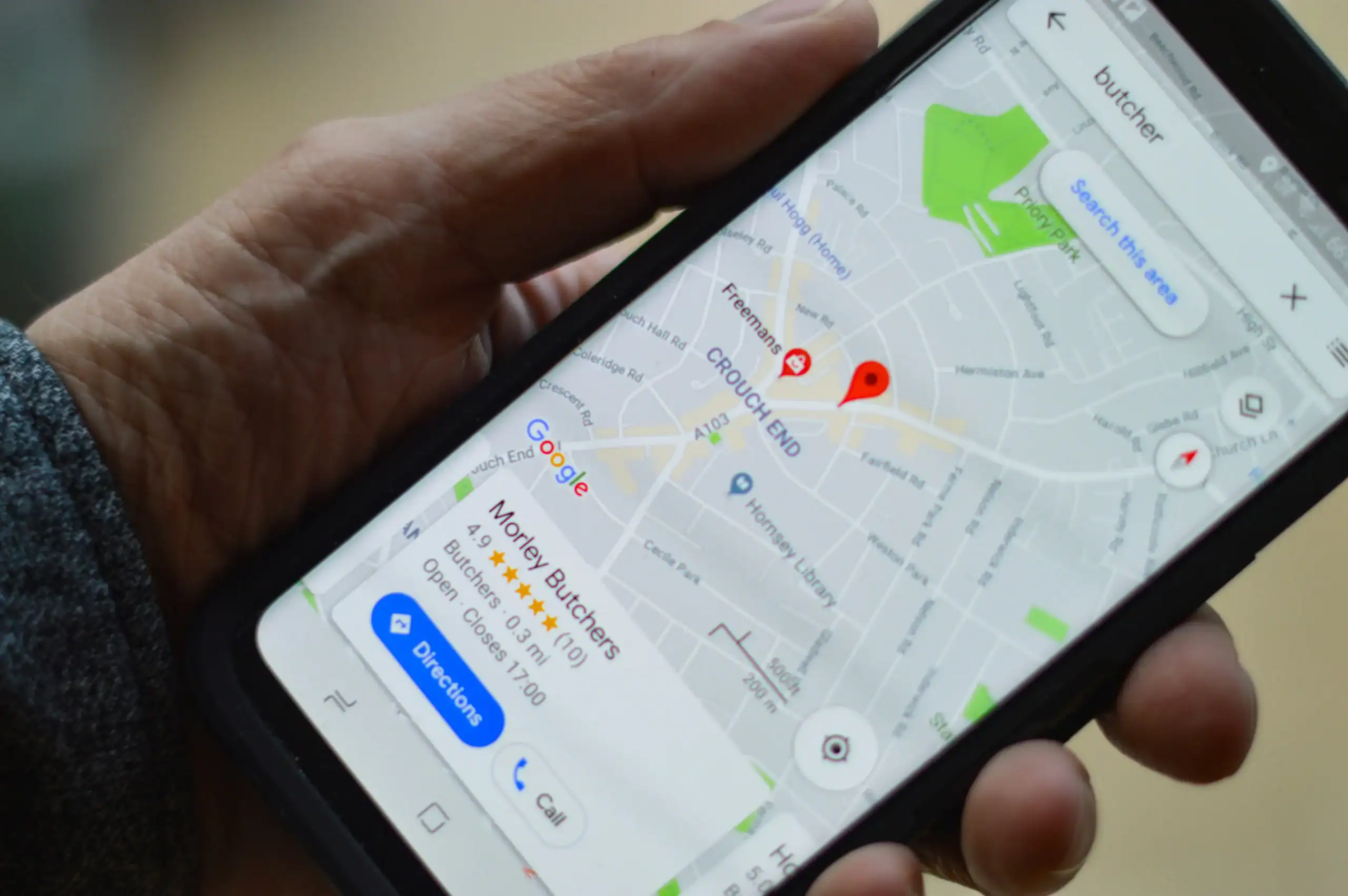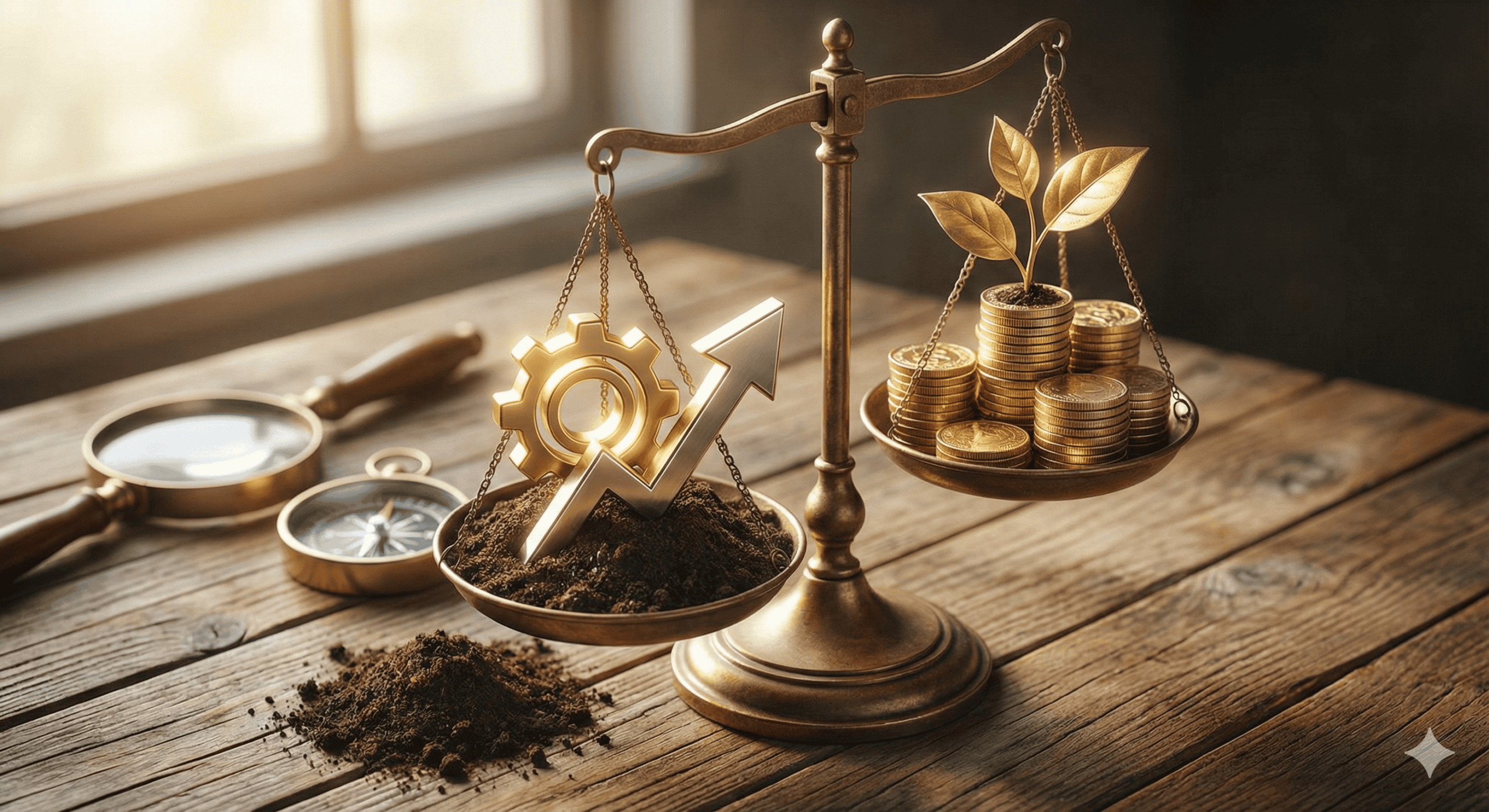Was sind Backlinks?
Backlinks, auch als Rückverweise oder Inbound Links bekannt, sind Links, die von einer externen Webseite auf eine andere Webseite verweisen.
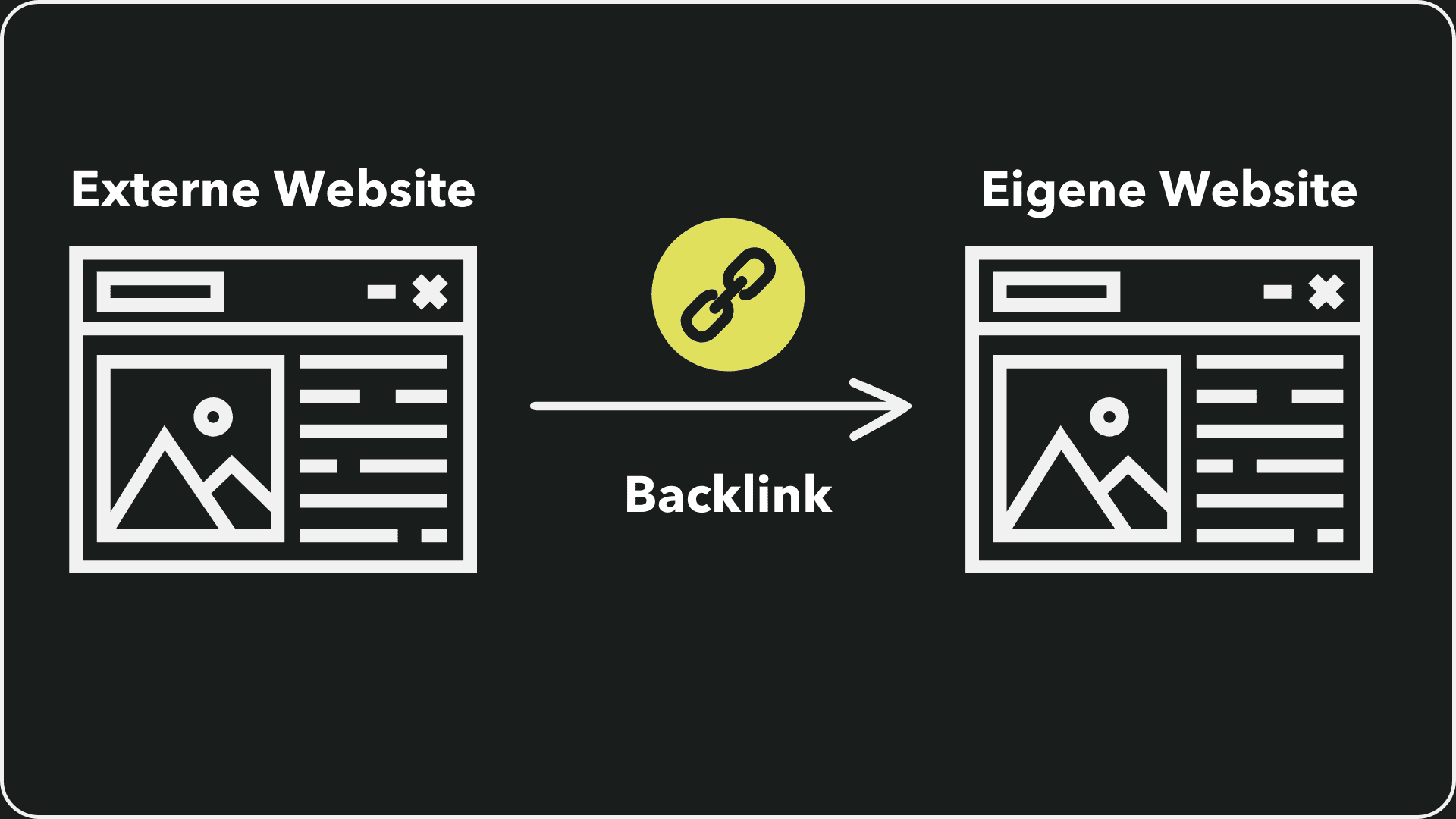
In der digitalen Welt sind Backlinks ein zentrales Element, das Suchmaschinen verwenden, um den Wert und die Relevanz einer Website zu bewerten.
Sie dienen dabei Google, Bing und anderen Suchmaschinen als Indikatoren für die Beliebtheit und Vertrauenswürdigkeit einer Webseite.
Je besser der Backlink Aufbau und die Backlink Strategie einer Seite ist, desto höher wird sie bei Suchanfragen in den Suchmaschinenergebnissen eingestuft.
Wenn zum Beispiel jemand deine Webseite in einem Blogpost, einem Artikel oder auf einer anderen Webseite erwähnt und dabei einen Link zu deiner Seite setzt, hast du einen Backlink von dieser Quelle erhalten.
Wenn du auf eine andere Webseite verlinkst, stellst du einen Backlink für diese Seite bereit.
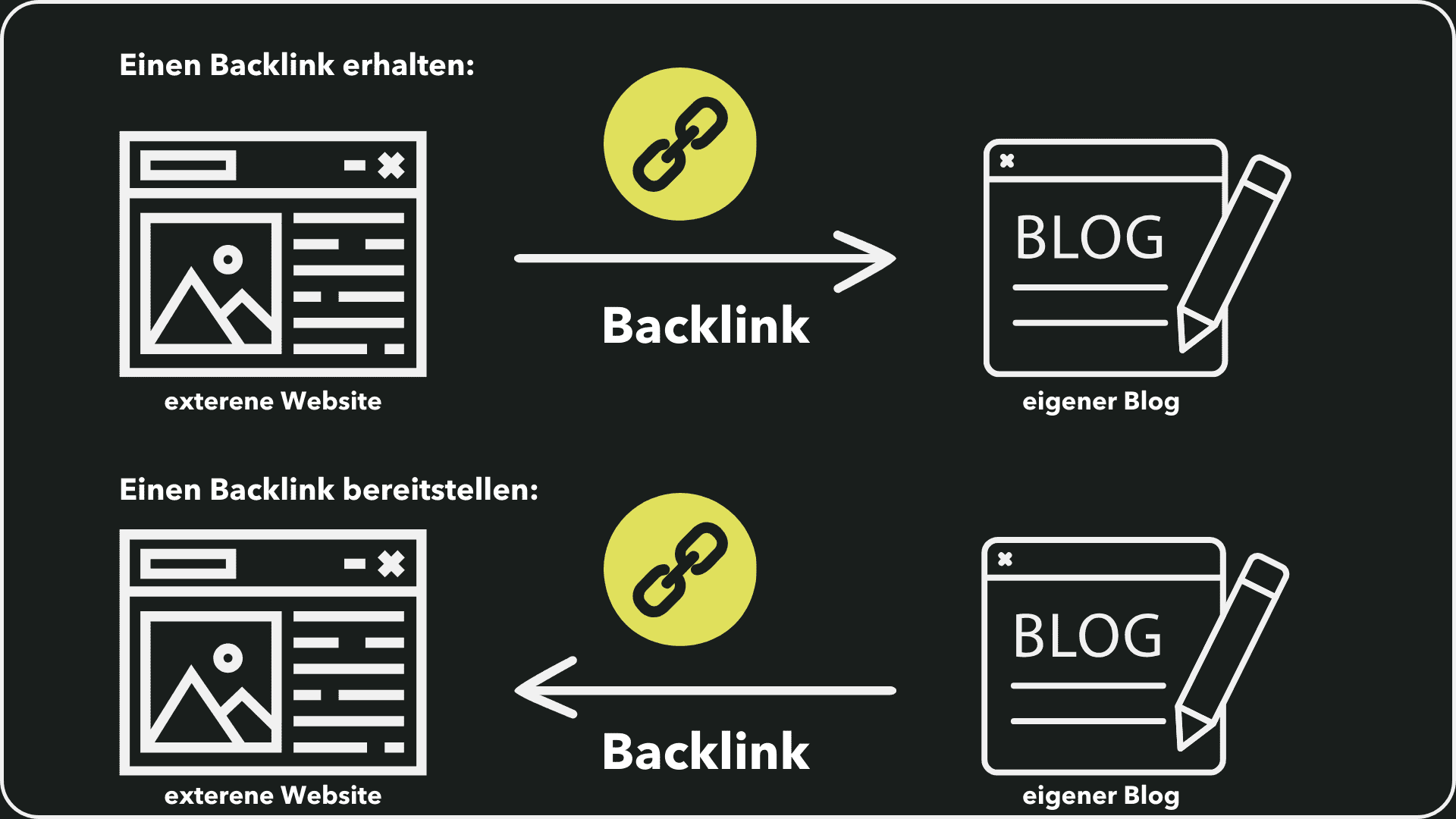
In der SEO-Welt werden Backlinks oft als Empfehlungen betrachtet.
Sie sind damit vergleichbar mit einem Gütesiegel im Internet.
Wenn eine vertrauenswürdige, relevante Webseite auf deine Website verlinkt, interpretiert Google das dementsprechend als Zeichen dafür, dass deine Inhalte von Wert sind.
Sie sind also nicht nur Verweise, sondern auch Ausdruck von Vertrauen und Anerkennung im digitalen Raum.
Wie funktionieren Backlinks?
Zu Beginn des Internets nutzten Suchmaschinen primär den Inhalt einer Webseite, um deren Relevanz zu bestimmen.
Dies führte jedoch dazu, dass viele Websites ihre Seiten mit Keywords überfüllten, um die Rankings zu manipulieren.
Es wurde schnell klar, dass ein besserer Indikator für die Qualität und Relevanz einer Seite erforderlich war.
Hier kamen Backlinks ins Spiel.
Wie bereits erklärt agieren Backlinks als digitale Empfehlungen oder Vertrauensabstimmungen von einer Webseite zur anderen.
Wenn Website A auf Website B verlinkt, interpretieren Suchmaschinen dies als einen Vertrauensbeweis von Website A für Website B.
In den Augen der Suchmaschine erhält Website B durch diesen Backlink eine gewisse Glaubwürdigkeit, auch «Link Juice» genannt.
Die Qualität und Relevanz der verlinkenden Webseite sind dabei von entscheidender Bedeutung.
Ein Backlink von einer renommierten und thematisch relevanten Webseite hat mehr Gewicht und trägt mehr zur Domain Autorität der verlinkten Seite bei als ein Link von einer weniger relevanten oder einer Spam-Seite.
Suchmaschinen verwenden dabei komplexe Algorithmen, um die Qualität, Relevanz und Vertrauenswürdigkeit eines Backlinks zu bewerten.
Dinge wie der Kontext, in dem der Link platziert ist, der Ankertext des Links, die Autorität der verlinkenden Seite und viele andere Faktoren spielen dabei eine wichtige Rolle bei der Bestimmung des Werts des Backlinks.
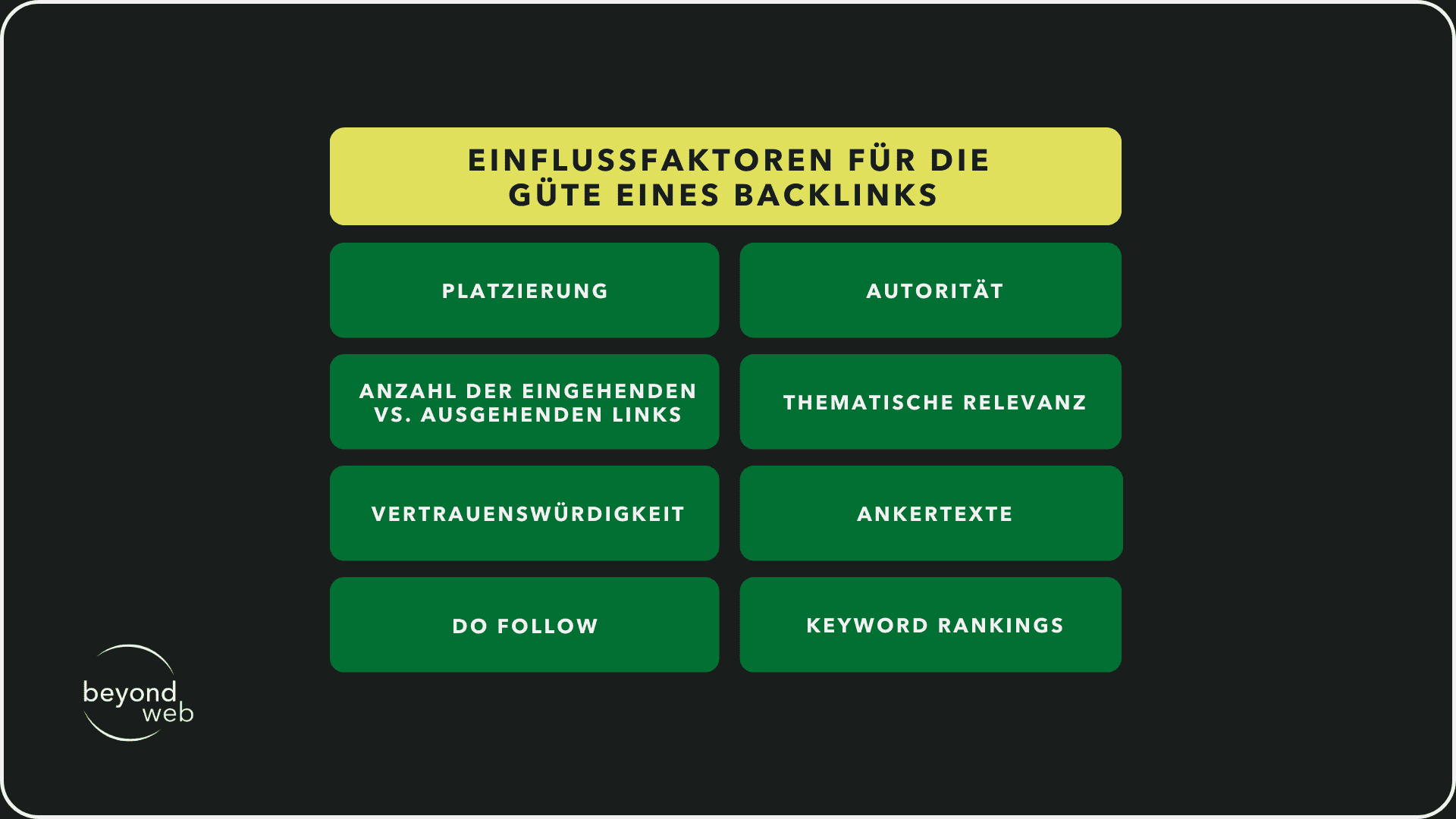
Warum sind sie wichtig?
Backlinks repräsentieren in den Augen von Suchmaschinen ein Zeichen des Vertrauens.
Aber trotzdem stellt sich die Frage: Warum sind Backlinks wichtig?
Wenn andere Websites auf deine verlinken, suggeriert das, dass deine Inhalte wertvoll und nützlich sind.
Je mehr hochwertige Backlinks eine Website besitzt, desto wahrscheinlicher wird sie als vertrauenswürdig betrachtet.
Dementsprechend neigt sie dazu besser abzuschneiden im Suchmaschinen Ranking.
Ein weiterer Vorteil von Backlinks ist der durch sie verursachte organische Traffic.
Ein gut positionierter Backlink auf einer thematisch relevanten oder populären Website kann einen kontinuierlichen Besucherstrom auf deine Seite lenken.
Diese Besucher sind in der Regel von hoher Qualität, da sie bereits durch den Inhalt der Ursprungsseite interessiert wurden und dann durch den Link zu dir geführt werden.
Durch Backlinks hast du ausserdem auch die Möglichkeit, dein Netzwerk in deiner Branche zu erweitern.
Ein Link von einer relevanten Website kann als eine Art Einladung gesehen werden, wodurch Beziehungen und Partnerschaften geknüpft oder vertieft werden können.
Zusätzlich fördern sie aber auch das Web-Crawling.
Suchmaschinen nutzen Bots, um das Web zu durchsuchen und neue Inhalte zu indexieren.
Backlinks erleichtern diesen Bots die Entdeckung neuer Webseiten, wodurch eine schnellere Indexierung deiner Seite möglich wird.
Die folgende Grafik zeigt dir noch einmal im Überblick, warum Backlinks wichtig sind:
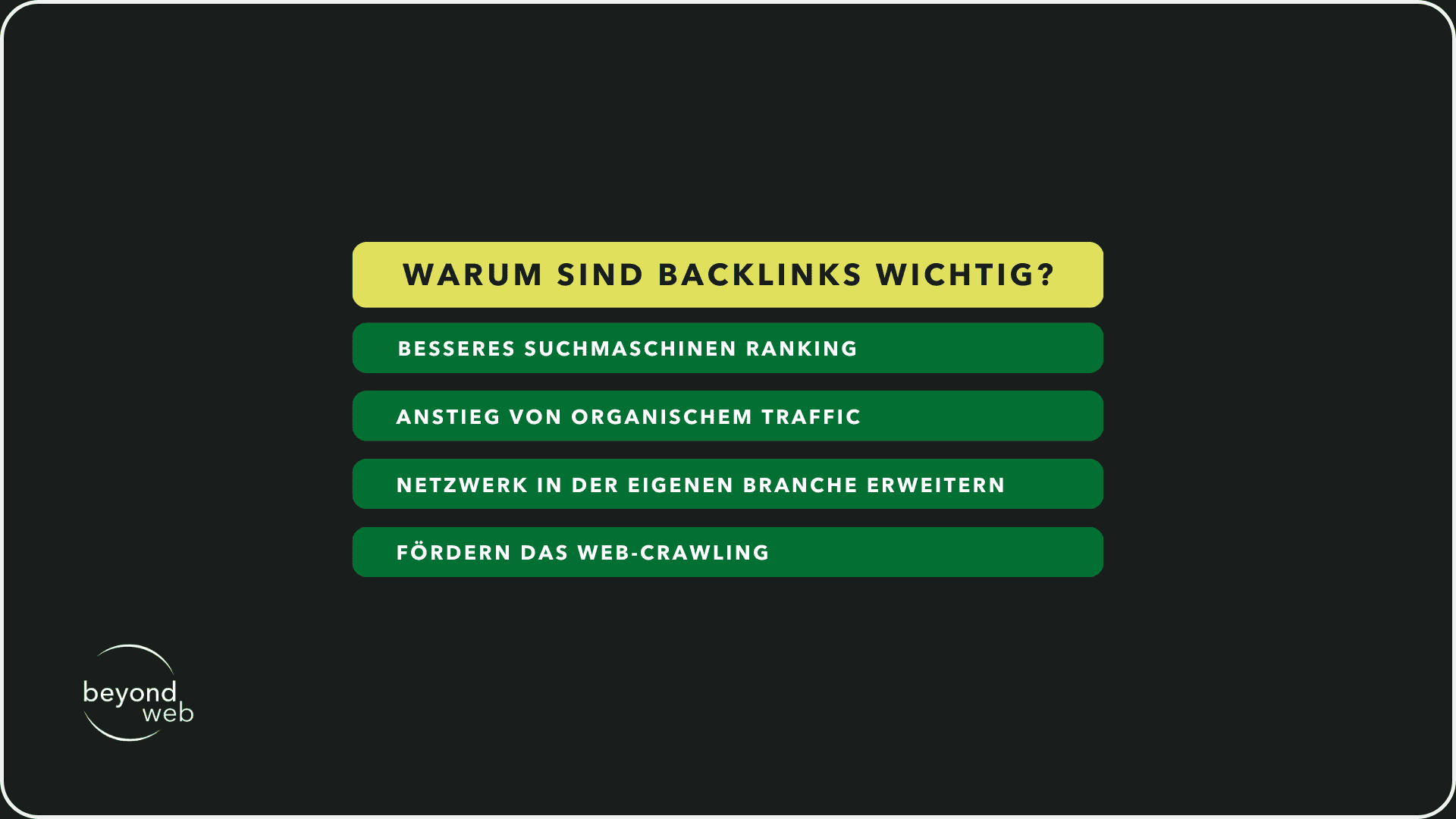
Welche Arten von Backlinks gibt es?
Backlinks können grob in interne und externe Links kategorisiert werden.
Während interne Links eine Verknüpfung zwischen verschiedenen Seiten derselben Domain darstellen, verbinden Backlinks eine Webseite mit einer anderen Domain.
Innerhalb dieser groben Unterteilung lassen sich verschiedene Arten von Backlinks identifizieren:
Dofollow, Nofollow, Bildlinks und Trashlinks.
Im folgenden Abschnitt möchte ich dir die Dofollow- sowie Nofollow-Backlinks näher bringen:
Dofollow-Backlinks
Dofollow-Backlinks beanspruchen eine essentielle Rolle bei der Positionierung einer Webseite innerhalb der Suchmaschinen.
Diese Links ermöglichen es den Suchalgorithmen, der Verlinkung zu folgen, was nicht nur intrinsischen Mehrwert für eine Webseite schafft, sondern ebenso die verlinkte Seite durch die substantielle Übertragung von Linkjuice signifikant stärkt.
Intrinsischer Mehrwert bedeutet dabei, dass ein Backlink, zum Beispiel in einem Blogartikel, für einen User einen Mehrwert bieten kann, da er erweiterte Informationen ausserhalb des Blogartikels ermöglicht.
Linkjuice stellt hingegen eine Metrik zur Quantifizierung der Stärke und Qualität eines Backlinks dar.
Das heisst, hierdurch wird erkennbar, wie viel Power ein Backlink besitzt beziehungsweise wie sehr eine andere Seite durch diesen Backlink gestärkt wird.
Nofollow-Backlinks
Im Kontrast dazu stehen Nofollow-Backlinks, welche das genaue Gegenteil bewirken, indem sie Suchmaschinen explizit anweisen, dem jeweiligen Link nicht zu folgen.
Somit wird die verweisende Seite nicht direkt mit der Ziel-Webseite verknüpft.
Aktuellen Algorithmen zufolge, betrachtet beispielsweise Google Nofollow-Links primär als indikative Hinweise.
Hierunter fallen beispielsweise Links aus sozialen Netzwerken, Foren, Pressemitteilungen, Gästebüchern, Wikipedia-Einträgen, Pingbacks und Verzeichnissen.
Dennoch ist ihre Relevanz nicht zu unterschätzen, da sie wesentlich zur Diversität und somit zur Natürlichkeit des Backlinkprofils beitragen.
Natürlichkeit im Zusammenhang mit Backlinks bezeichnet dabei vor allem Profile, die auf der einen Seite verschiedene Backlinks besitzen, das heisst zum Beispiel eine Mischung aus DoFollow und NoFollow Backlinks, aber auch Profile die einige freiwillig gesetzte Links von themenrelevanten Quellen aufweisen.
Darüber hinaus können insbesondere soziale Medien durch Nofollow-Backlinks zu erhöhter Aufmerksamkeit und folglich zu einem Anstieg des Website-Traffics beitragen.
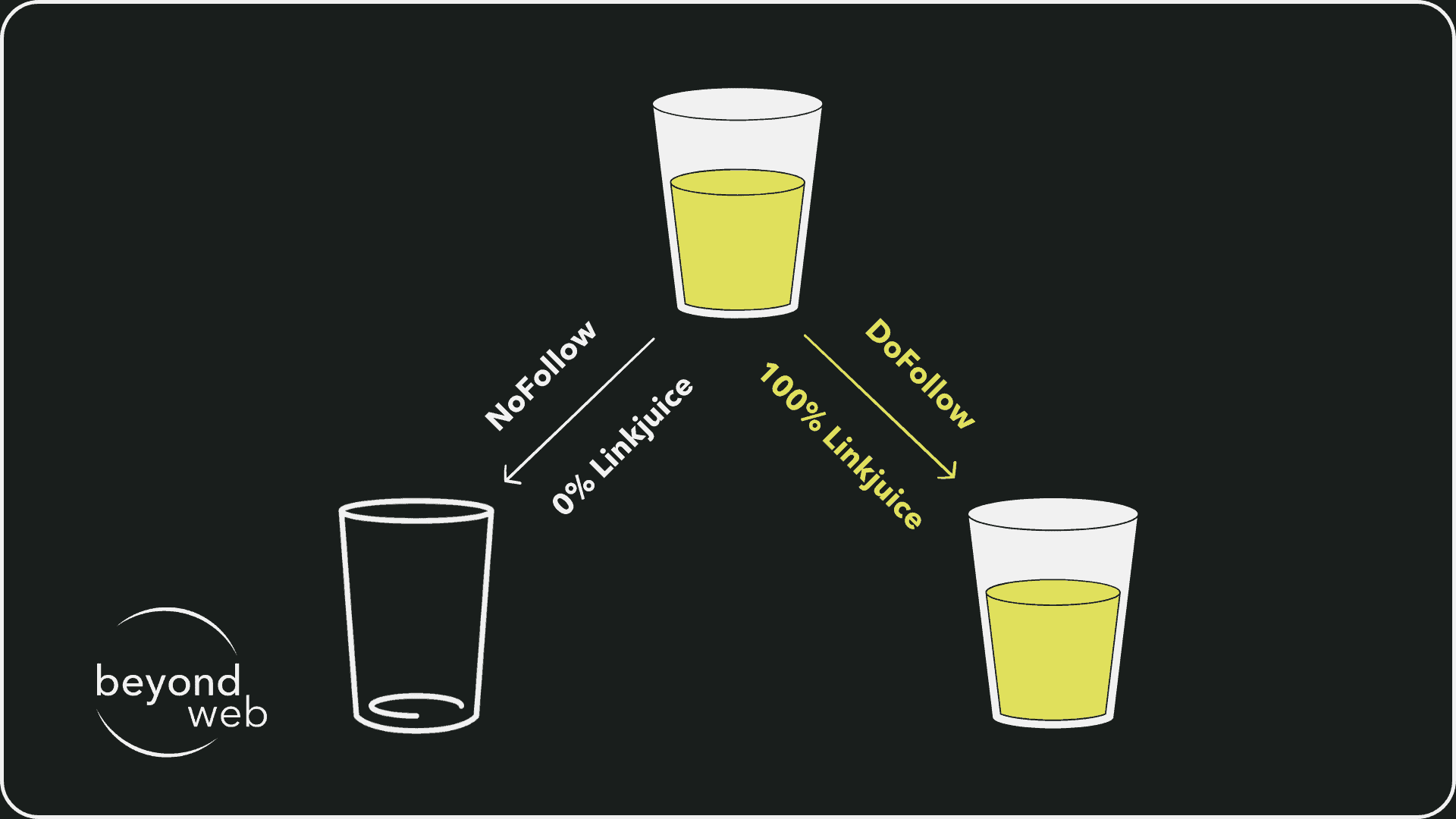
Wie kann ich mehr Backlinks erhalten?
Sicherlich stellst du dir die Frage:
Wie kann man mehr und vor allem qualitativ hochwertige Backlinks gewinnen?
Die Antwort darauf ist vielschichtig und erfordert eine Kombination aus bewährten Strategien und kreativen Ansätzen.
In den folgenden Abschnitten werde ich dir die wichtigsten Strategien genauer erläutern:
Business Citations (NoFollow)
Business Citations sind Verweise auf den Namen, die Adresse und die Telefonnummer eines Unternehmens in Online-Verzeichnissen und anderen Websites.
Diese Verweise sind wichtig für die lokale SEO, da sie dabei helfen, die Authentizität und Glaubwürdigkeit eines Unternehmens in einer bestimmten Region oder einem bestimmten Markt zu bestätigen.
Viele dieser Business Citations kommen als NoFollow-Links.
Obwohl NoFollow-Links nicht den gleichen direkten SEO-Wert wie DoFollow-Links haben, sind sie dennoch von Bedeutung.
- #1 Sie bieten echten Traffic. Das heisst, dass Menschen, die regionale Verzeichnisse oder Branchenverzeichnisse durchsuchen, dein Unternehmen finden und auf deine Website klicken können.
- Sie senden vertrauenswürdige Signale an Suchmaschinen, dass dein Unternehmen tatsächlich existiert und in der genannten Region operiert.
- NoFollow-Links tragen zu einer diversifizierten und natürlicher aussehenden Linkstruktur bei, was in der Augen der Suchmaschinen positiv bewertet wird.
Um das Potenzial von Business Citations voll auszuschöpfen, sollten Unternehmen sicherstellen, dass ihre Informationen konsistent und aktuell sind, unabhängig davon, auf welchem Verzeichnis oder welcher Plattform sie gelistet sind.
Partner Outreach
Der Partner Outreach ist ein digitales Networking-Tool, das besonders im Bereich der Suchmaschinenoptimierung seine Stärken ausspielt.
Es handelt sich dabei um den gezielten Ansatz, Beziehungen zu potenziellen Partnern, Influencern, Bloggern und anderen Websites oder Branchenexperten aufzubauen und zu pflegen, um Backlinks und Referenzen zu erlangen.
Der Schlüssel zum erfolgreichen Partner Outreach liegt dabei in der Relevanz und dem beidseitigen Nutzen.
Anstatt wahllos Websites oder Influencer auf Social Media zu kontaktieren, sollten Unternehmen sich auf diejenigen konzentrieren, die thematisch zu ihrem Geschäftsfeld passen.
Eine gemeinsame Basis oder ein gemeinsames Interesse erhöht die Chance auf eine erfolgreiche Zusammenarbeit erheblich.
Dabei geht es nicht nur darum, um Backlinks zu bitten.
Der Aufbau von Beziehungen kann in verschiedenen Formen erfolgen, sei es durch das Teilen von Inhalten, das Angebot eines Gastbeitrags, das gemeinsame Erarbeiten von Studien oder das Organisieren von Webinaren und Online-Events.
Wichtig ist, keine Massenmails zu verfassen, die nicht auf die jeweilige Zielperson zugeschnitten sind.
Authentische Kommunikation und ein professioneller Auftritt sind entscheidend.
KI kann hilfreich sein, um sich inspirieren zu lassen.
Die menschliche Note darf aber nicht verloren gehen – genau hier kann ein AI-Humanizer unterstützen, indem er KI-generierte Texte natürlicher wirken lässt und so den persönlichen Charakter in der Ansprache bewahrt.
Das Ziel ist es, einen Mehrwert für beide Seiten zu schaffen.
Ein gut durchdachter Partner Outreach kann demnach nicht nur die Anzahl der Backlinks erhöhen, sondern auch den Traffic steigern und die Markenbekanntheit verbessern.
Content Marketing
Content Marketing hat sich in den letzten Jahren als eine der effektivsten Strategien zur Steigerung der Online-Sichtbarkeit und zur Förderung des Engagements herausgestellt.
Im Kern geht es beim Content Marketing darum, wertvollen, relevanten und konsistenten Inhalt zu erstellen und zu verbreiten, um eine klar definierte Zielgruppe anzuziehen und zu binden.
Doch abseits von der direkten Kundenansprache hat Content Marketing auch einen immensen Einfluss auf die Suchmaschinenoptimierung und insbesondere auf den Aufbau von Backlinks.
Hochwertiger Inhalt ist wie ein Magnet für Backlinks.
Wenn du fundierte Artikel, detaillierte Studien, anschauliche Infografiken oder informative Videos erstellst, die echten Mehrwert bieten, werden andere Websites wahrscheinlicher auf deinen Inhalt verlinken.
Dies geschieht oft organisch, wenn beispielsweise Blogger, Journalisten oder Branchenexperten auf deinen Content stossen und ihn als Referenz oder zur Weiterbildung ihrer eigenen Leserschaft nutzen.
Ein effektives Content Marketing geht jedoch über das blosse Erstellen von Inhalten hinaus.
Die Promotion dieses Contents, sei es durch soziale Medien, E-Mail-Marketing, Influencer-Kooperationen oder bezahlte Werbung, ist ebenso wichtig, um seine Reichweite und Wirkung zu maximieren.
Je mehr Sichtbarkeit dein Content erhält, desto grösser ist die Wahrscheinlichkeit, dass andere darauf aufmerksam werden und Verlinkungen vornehmen.
Es ist trotzdem wichtig zu betonen, dass nicht jeder Inhalt Backlinks anzieht.
Der Schlüssel liegt in der Qualität und Relevanz.
Der Inhalt muss also nicht nur gut geschrieben oder produziert sein, sondern auch die Bedürfnisse und Fragen deiner Zielgruppe ansprechen.
Insgesamt ist Content Marketing nicht nur ein Mittel zur Steigerung des Engagements und zur Bindung von Kunden, sondern auch ein gutes Instrument, um die organische Sichtbarkeit durch den Gewinn wertvoller Backlinks zu erhöhen.
HARO
HARO, kurz für «Help a Reporter Out», ist eine innovative Plattform, die Journalisten mit Experten und Informationsquellen aus verschiedenen Branchen zusammenbringt.
Ursprünglich entwickelt, um Reportern den Zugang zu qualifizierten Quellen für ihre Geschichten zu erleichtern, hat sich HARO auch als wertvoll für das Linkbuilding und die Erweiterung der Online-Präsenz von Marken und Fachleuten etabliert.
Die Funktionsweise von HARO ist einfach, aber effektiv.
Journalisten, die Informationen, Zitate oder Hintergrundwissen für ihre Artikel benötigen, stellen Anfragen auf der Plattform.
Experten und Fachleute, die bei HARO registriert sind, können auf diese Anfragen antworten und ihre Expertise teilen.
Wenn ein Journalist die bereitgestellte Information in seinem Artikel verwendet, wird oft ein Backlink zur Website des Experten oder Unternehmens eingefügt.
Für Marken und Einzelpersonen bietet HARO eine hervorragende Gelegenheit, ihre Autorität in ihrem Fachgebiet zu demonstrieren und gleichzeitig qualitativ hochwertige Backlinks von renommierten Medien-Websites zu erhalten.
Es ist jedoch wichtig zu betonen, dass Erfolg bei HARO Qualität erfordert.
Schnelle, unüberlegte Antworten werden selten ausgewählt.
Es ist entscheidend, auf Anfragen mit fundiertem Wissen und einem echten Mehrwert für den Journalisten zu reagieren.
Unverlinkte Brand Mentions
Bei unverlinkten Brand Mentions handelt es sich um Erwähnungen deines Unternehmens, deiner Marke oder deiner Produkte auf Websites, Blogs oder in sozialen Medien, die jedoch nicht direkt auf deine Webseite verlinken.
Während diese Erwähnungen von sich aus bereits wertvoll für die Markenbekanntheit sind, bieten sie auch eine hervorragende Gelegenheit, wertvolle Backlinks zu generieren.
Unverlinkte Markennennungen entstehen aus verschiedenen Gründen.
Vielleicht hat ein Blogger über dein Produkt geschrieben und vergessen, einen Link einzufügen.
Oder ein zufriedener Kunde hat in einem Forum über seine positiven Erfahrungen mit deinem Service berichtet, ohne eine Verlinkung vorzunehmen.
Solche Erwähnungen sind oft Gold wert, da sie von echten Benutzern und in einem positiven Kontext gemacht werden.
Der Prozess der Nutzung solcher Erwähnungen beginnt mit der Überwachung und Identifikation.
Tools wie Ahrefs können dabei helfen, das Web nach Erwähnungen deiner Marke oder deines Unternehmens zu durchsuchen.
Sobald du eine unverlinkte Markennennung entdeckst, kannst du den Websitebetreiber oder Autor kontaktieren und dich für die Erwähnung bedanken.
In der gleichen Kommunikation kannst du vorsichtig anfragen, ob es möglich wäre, einen Link zu deiner Website hinzuzufügen, da dies den Lesern helfen könnte, mehr Informationen direkt von der Quelle zu erhalten.
Insgesamt bieten unverlinkte Markennennungen eine Win-Win-Situation:
Du stärkst nicht nur deine Backlink-Struktur und SEO, sondern festigst auch Beziehungen zu Bloggern, Autoren und deiner Zielgruppe.
Es ist eine Methode, die sowohl diskret als auch effektiv ist und einen echten Mehrwert in deiner Linkbuilding-Strategie darstellen kann.
Broken Links Outreach
Die Methode des «Broken Links Outreach» ist eine bewährte Taktik innerhalb der Suchmaschinenoptimierung, die sowohl Websitebetreibern als auch Besuchern zugutekommt.
Kern dieser Strategie ist das Identifizieren von sogenannten «toten Links» auf anderen Websites, die zu nicht mehr existierenden oder verschobenen Inhalten führen, und das Anbieten einer alternativen, funktionsfähigen Ressource – idealerweise von deiner eigenen Website.
Aber wie funktioniert das genau?
Das Internet ist ständig im Wandel, und im Laufe der Zeit können Inhalte verschoben, gelöscht oder neu organisiert werden.
Dies führt oft dazu, dass externe Links, die einst zu diesen Inhalten führten, ins Leere laufen.
Für Websitebesitzer sind solche defekten Links problematisch, da sie das Benutzererlebnis beeinträchtigen und das Ranking in den Suchergebnissen negativ beeinflussen können.
Hier kommt der Broken Links Outreach ins Spiel.
Durch den Einsatz von Tools wie dem «Broken Link Checker» kannst du Websites in deiner Branche nach defekten Links durchsuchen.
Wenn du einen solchen Link findest, der zu einem Thema oder Inhalt führt, der deinem eigenen ähnlich ist oder den du sogar verbessert hast, kannst du den Websitebetreiber kontaktieren.
Informiere ihn über den defekten Link und bieten deinen eigenen Inhalt als Alternative an.
Der Broken Links Outreach ist dadurch eine proaktive Methode, um qualitativ hochwertige Backlinks zu gewinnen, während man gleichzeitig der Online-Community hilft.
Es ist eine Win-Win-Situation, die, wenn richtig umgesetzt, zu höherem Traffic und besseren Rankings führen kann.
Backlinks kaufen
Das Kaufen von Backlinks ist eine Praxis, die in der SEO-Welt seit jeher kontrovers diskutiert wird.
Auf den ersten Blick erscheint es als eine schnelle und einfache Möglichkeit, die Anzahl der eingehenden Links zu einer Website zu erhöhen und somit potenziell deren Suchmaschinenranking zu verbessern.
Aber wie bei vielen Dingen gibt es auch hier einige signifikante Nachteile und Risiken.
Backlinks sind aus einem einfachen Grund wertvoll:
Sie signalisieren Suchmaschinen, dass eine Website als vertrauenswürdig und autoritär angesehen wird.
Dieses Vertrauen wird durch organische, freiwillige Verlinkung aufgebaut.
Wenn Backlinks jedoch gekauft werden, fehlt diese authentische Empfehlung, und die Links können in vielen Fällen als künstlich und manipulativ angesehen werden.
Suchmaschinen, insbesondere Google, haben im Laufe der Jahre erhebliche Anstrengungen unternommen, um solche Praktiken zu erkennen und Websites, die sie nutzen, zu bestrafen.
Google’s Penguin-Update, das erstmals 2012 eingeführt wurde, zielte speziell darauf ab, Websites mit unnatürlichen Linkprofilen zu identifizieren und zu bestrafen.
Wenn also Websites erwischt werden, die Backlinks kaufen, kann dies zu ernsthaften Strafen führen, einschliesslich des Verlusts von Suchmaschinenrankings.
Darüber hinaus besteht beim Kauf von Backlinks immer das Risiko, mit Websites von geringer Qualität in Verbindung gebracht zu werden.
Dies kann nicht nur das SEO-Profil einer Website schädigen, sondern auch ihre Glaubwürdigkeit und Reputation in den Augen der Besucher.
Es ist aber wichtig zu betonen, dass nicht alle gekauften Links per se schlecht sind.
Es gibt legitime Möglichkeiten, wie gesponserte Inhalte oder Werbung, bei denen Links gekauft werden können.
Aber auch hier ist Transparenz entscheidend, und solche Links sollten immer mit einem «nofollow»-Attribut versehen werden, um klarzustellen, dass es sich um eine bezahlte Partnerschaft handelt.
Die folgende Tabelle zeigt nun noch einmal alle Faktoren im Überblick, die dazu dienen, mehr Backlinks zu erhalten.
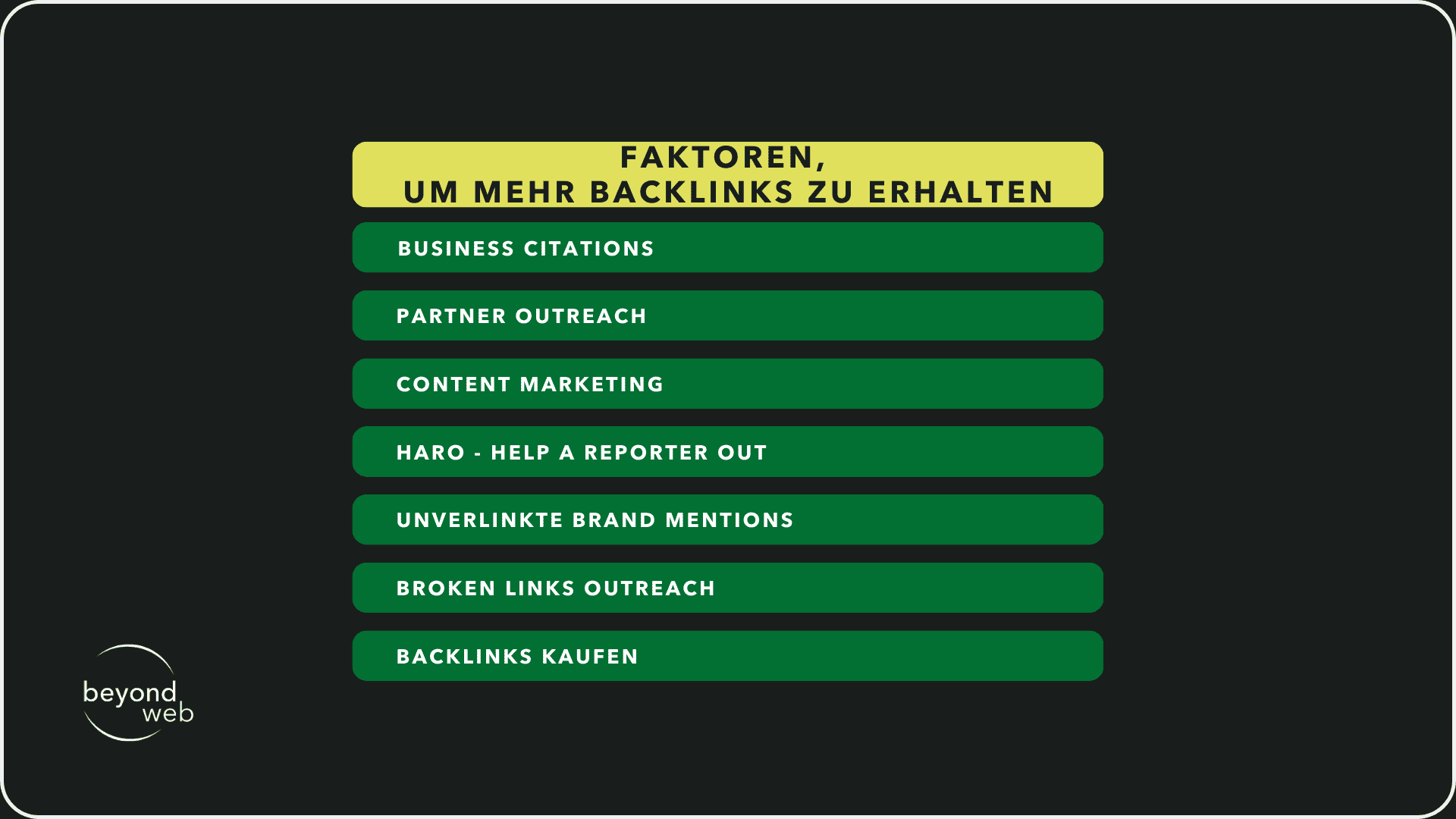
Alternativen zu Backlinks
Während Backlinks zweifellos eine wesentliche Säule in der Suchmaschinenoptimierung (SEO) sind, sind sie bei weitem nicht der einzige Weg, um die Sichtbarkeit und das Ranking einer Website zu verbessern.
Es ist essenziell, ein ausgewogenes und vielseitiges SEO-Portfolio aufzubauen, das über reine Linkbuilding-Strategien hinausgeht.
Dies stellt sicher, dass deine Website in verschiedenen Aspekten der Optimierung robust und widerstandsfähig ist.
In diesem Zusammenhang gibt es zwei entscheidende Bereiche, die oft als Alternativen oder Ergänzungen zum Linkaufbau betrachtet werden: die technische Optimierung und die On-Page Optimierung.
Beide haben ihren eigenen Wert und ihre eigenen Methoden, um das Gesamterlebnis für deine Besucher zu verbessern und die Suchmaschinen dazu zu ermutigen, deine Seite höher einzustufen.
Ich werde dir die beiden Bereiche in den folgenden Abschnitten genauer erklären:
Technische Optimierung
Die technische Optimierung bildet das Fundament einer jeden erfolgreichen SEO-Strategie und kann durch eine erfahrene Schweizer SEO Agentur verbessert werden.
Sie bezieht sich dabei auf die Verbesserung der technischen Aspekte einer Website, um die Crawling- und Indexierungsprozesse der Suchmaschinen zu erleichtern und gleichzeitig die User Experience zu steigern.
Während der Inhalt und die Backlinks einer Website oft die sichtbaren Teile des SEO-Eisbergs sind, liegt die technische Optimierung darunter und stellt sicher, dass alles reibungslos funktioniert.
Ein zentrales Element der technischen Optimierung ist die Ladezeit einer Website.
In unserer schnelllebigen digitalen Welt erwarten Nutzer schnelle Ladezeiten, und selbst kleinste Verzögerungen können dazu führen, dass Besucher abspringen.
Suchmaschinen erkennen dies und belohnen Websites, die schnell und effizient laden, mit besseren Rankings.
Aber es geht nicht nur um Geschwindigkeit.
Die Struktur der Website, einschliesslich einer klaren Hierarchie und einer sinnvollen internen Verlinkung, ermöglicht es Suchmaschinen, Inhalte leichter zu finden und zu indexieren.
Dies wird ergänzt durch eine saubere und effiziente Code-Struktur, die frei von Fehlern ist und moderne Webstandards einhält.
Ein weiterer Aspekt ist die Mobile Optimierung.
Mit einem stetig wachsenden Anteil von Nutzern, die auf Websites über mobile Geräte zugreifen, ist es unerlässlich, dass Websites auf kleineren Bildschirmen gut funktionieren und nutzerfreundlich sind.
Google hat den mobilen Index als Hauptindex für die Web-Crawling-Aktivitäten festgelegt, was die Wichtigkeit dieses Aspekts unterstreicht.
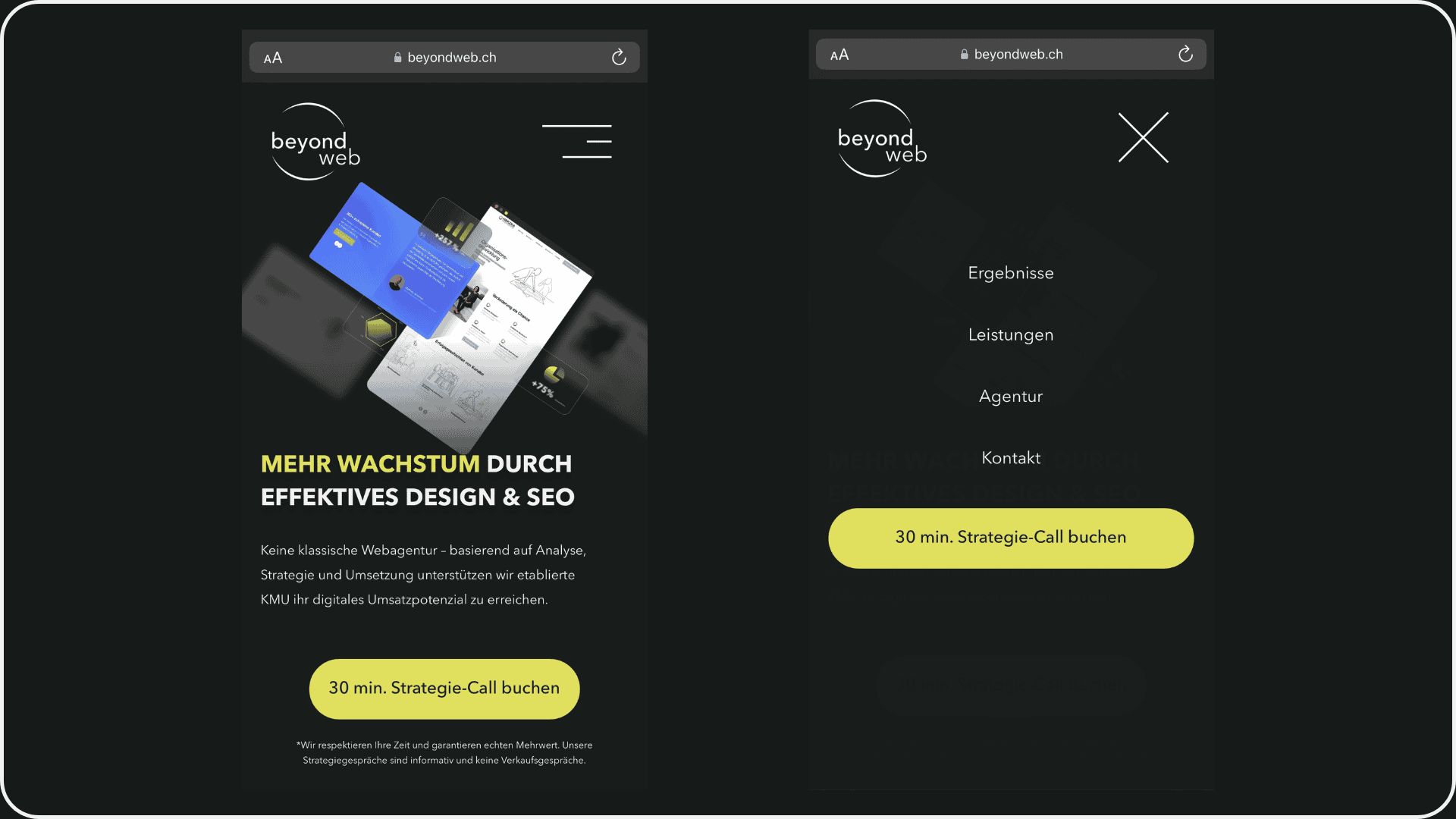
Schliesslich ist auch die Sicherheit ein zentrales Anliegen.
Eine HTTPS-Verschlüsselung schützt nicht nur die Daten der Nutzer, sondern wird auch von Suchmaschinen als ein positiver Ranking-Faktor betrachtet.
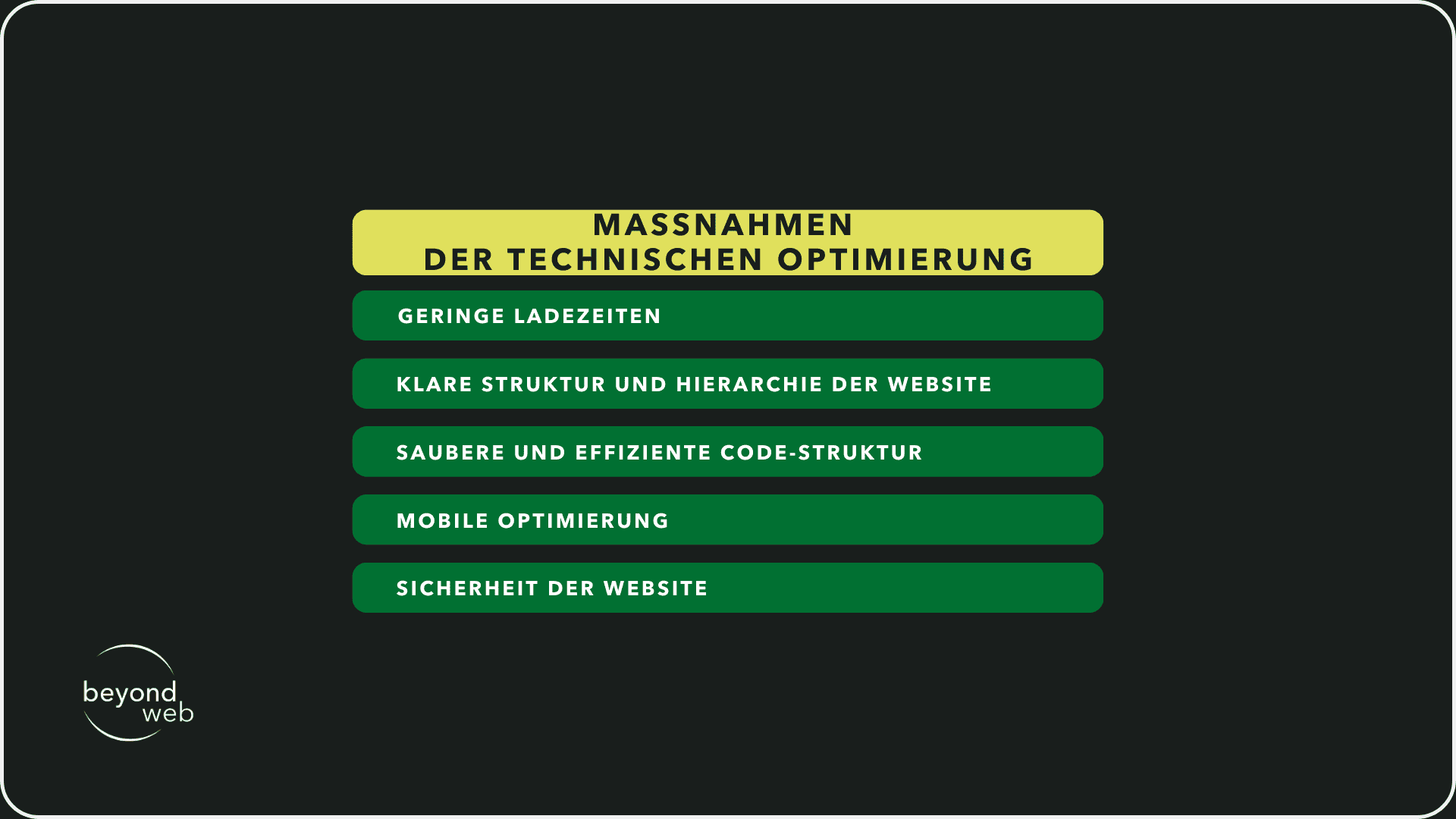
Insgesamt betrachtet, stellt die technische Optimierung sicher, dass das Fundament einer Website solide ist, sodass die anderen SEO-Bemühungen – wie Inhaltserstellung und Linkaufbau – effektiv darauf aufbauen können.
On-Page Optimierung
On-Page Optimierung bezieht sich auf die Massnahmen, die direkt auf einer Webseite ergriffen werden, um ihre Position in den Suchergebnissen zu verbessern.
Im Gegensatz zu Off-Page Strategien, wie dem Aufbau von Backlinks, konzentriert sich die On-Page Optimierung auf den Inhalt und die HTML-Struktur einer Seite.
Die Qualität und Relevanz des Inhalts stehen im Mittelpunkt jeder On-Page Strategie.
Suchmaschinen wie Google belohnen Inhalte, die informativ, gut recherchiert und einzigartig sind.
Dies bedeutet, dass Webseitenbetreiber regelmässig hochwertigen Content erstellen sollten, der den Bedürfnissen und Interessen ihrer Zielgruppe entspricht.
Doch es geht nicht nur um den Inhalt.
Auch die Struktur der Webseite ist entscheidend.
Titel-Tags, Meta-Beschreibungen und Überschriften sollten sorgfältig ausgewählt werden, um sowohl den Nutzern als auch den Suchmaschinen klar zu machen, worum es auf der Seite geht.
Gleichzeitig helfen sie, die Klickrate aus den Suchergebnissen zu erhöhen.
Zusätzlich spielt auch die interne Verlinkung eine wichtige Rolle.
Sie hilft Suchmaschinen, den Kontext zwischen verschiedenen Seiten einer Website zu verstehen und kann den «Linksaft», auch «Link Juice» genannt, effektiv verteilen, um die Autorität einer Seite zu stärken.
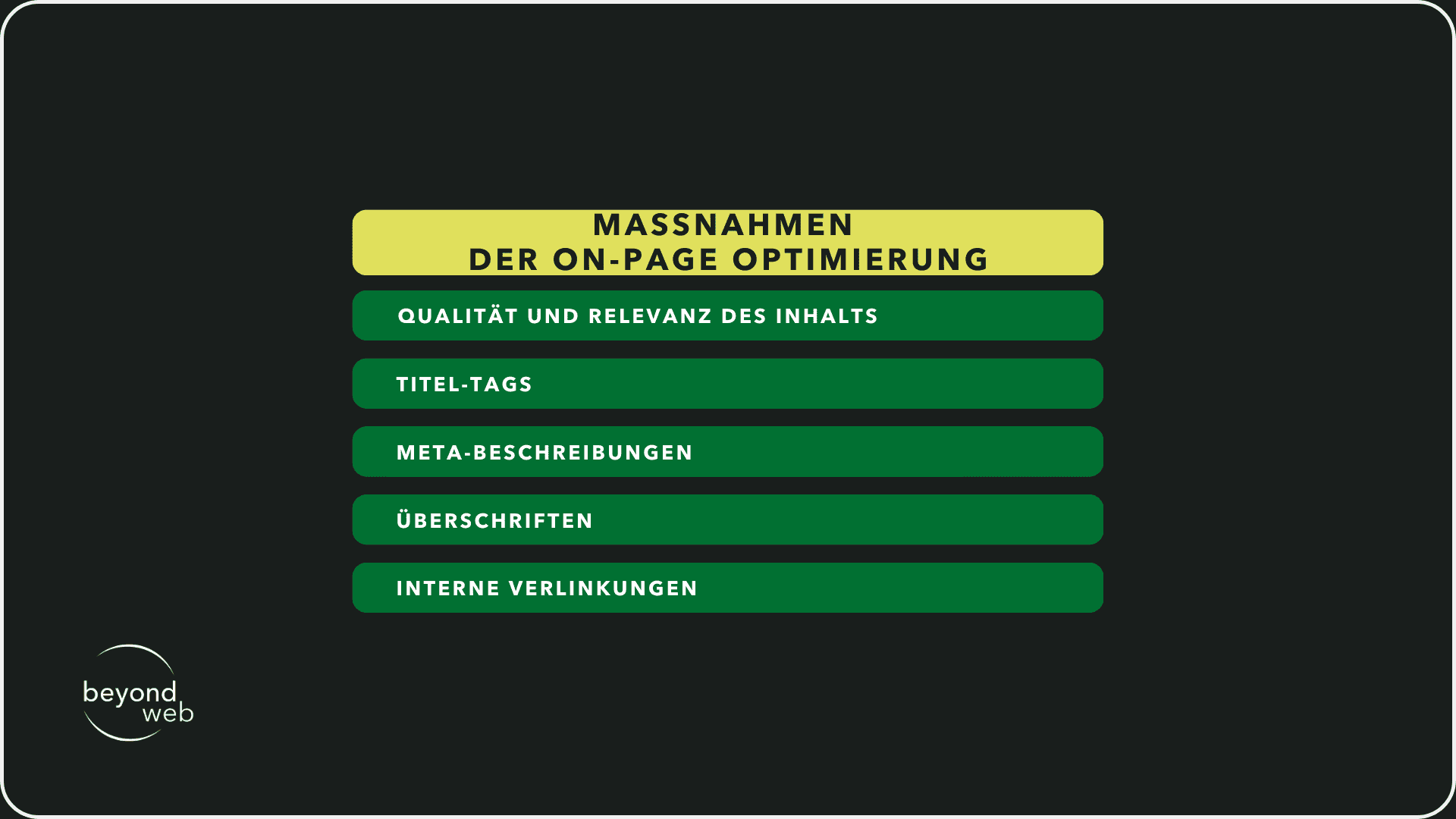
Insgesamt ist die On-Page Optimierung ein fortlaufender Prozess.
Da sich die Algorithmen von Suchmaschinen ständig weiterentwickeln, müssen auch Webseitenbetreiber ihre Strategien regelmässig anpassen und aktualisieren, um weiterhin sichtbar zu bleiben und ihren Wettbewerbern immer einen Schritt voraus zu sein.
